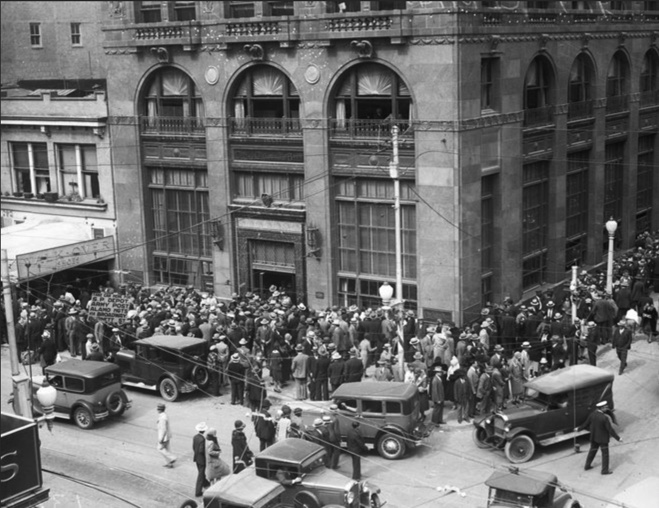
("San Antonio's City Bank Going out of Business" humanitiestexas.org)
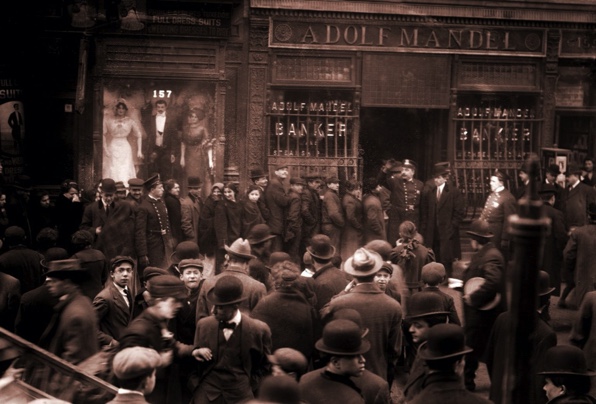
("Banks Failing and People Are Trying to Get Their Money Back" news.bitcoin.com)
A combination of factors caused the Great Depression. During the 1920s, the economy was roaring. Everyone invested in the stock market. Banks loaned money to people who used them to buy stocks. Banks also used customer money themselves to invest in the market. Overconfidence in the economy caused stocks to become highly overpriced. However, it all ended August 1929, when the Federal Reserve Bank raised interests rates. On October 24, 1929, "Black Tuesday," the market came crashing down. Stockholders lost over $14 billion that day and $40 billion by 1929's end.

("San Antonio's City Bank Going out of Business" humanitiestexas.org)
"The effects of the stock market crash rippled throughout the economy. Nearly 700 banks failed in waning months of 1929 and more than 3,000 collapsed in 1930. Federal deposit insurance was as-yet unheard of, so when the banks failed, people lost all their money. Some people panicked, causing bank runs as people desperately withdrew their money, forcing more banks to close." ("The Great Depression and Its Causes" thoughtco.com)
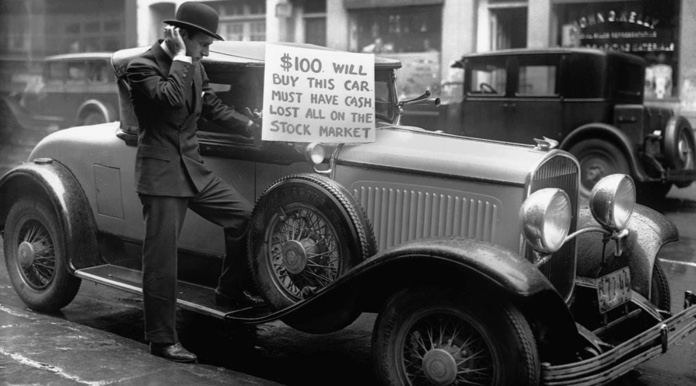
("Man Trying to Sell Car for $100" history.com)
After losing so much, people stopped spending money on unnecessary items. People kept their money under mattresses instead of banks. Small businesses couldn’t get loans. As spending decreased, manufacture slowed. People lost jobs. Unemployment skyrocketed, and breadlines doubled.
"Economic depressions are like the flu which are contagious. A factory closes and the workers lose their jobs. Since they don't have money, they stop buying new clothes. Soon the clothing stores go out of business and those workers lose their jobs. Then factory workers and the clothing store workers stop going to restaurants. Pretty soon the restaurants close and those workers lose their jobs. The spiral widens and widens, pulling everything down with it, like water swirling into a drain." (Pearson 3)
By 1933, unemployment reached 25 percent and was even higher in some cities reaching nearly 80 percent. Around the country, people could no longer afford housing. Many families became homeless and had no choice but to live in shanty towns or "Hoovervilles."
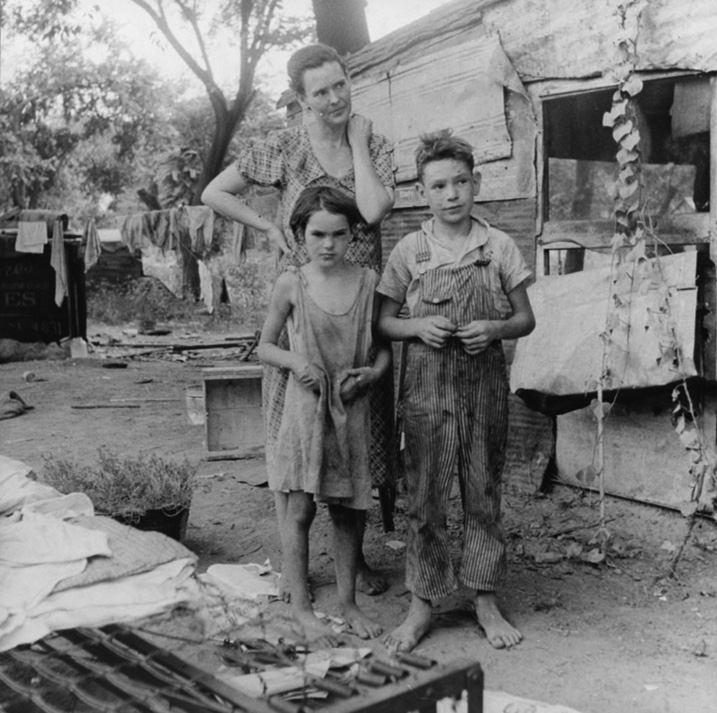
("Poor Family during the Great Depression" stockpickssystem.com)
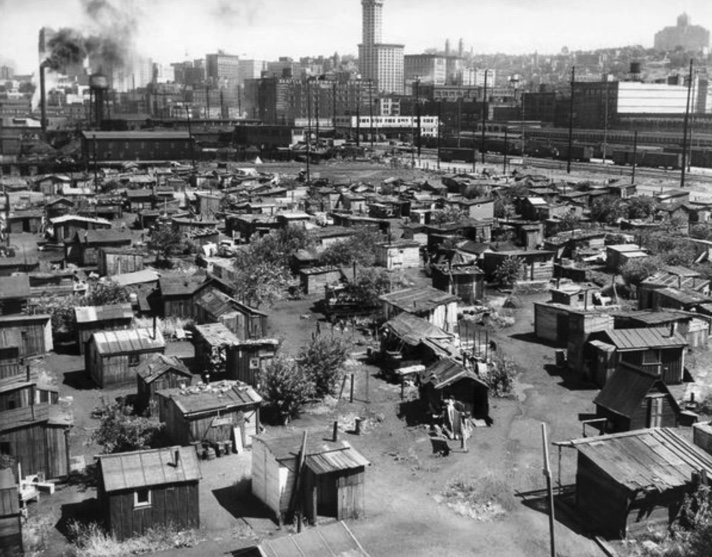
("Hoovervilles in New York City, Portland, and Seattle" oldphotoarchive.com)
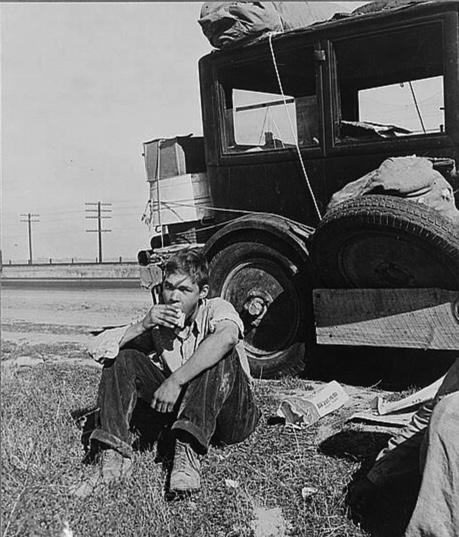
("Eating along the Side of the Road" thebalance.com)